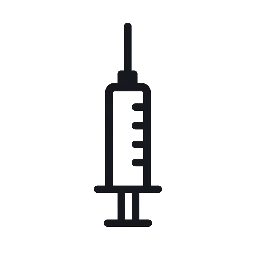The world of weight loss and metabolic health is on the verge of a seismic shift. As obesity continues to rise globally, researchers and pharmaceutical innovators have been racing to develop effective solutions that move beyond traditional diet, exercise, and even existing GLP-1 medications. Enter Retatrutide, a novel investigational drug that is being hailed as the next frontier in obesity management—and it could change the way we think about weight loss by 2026.
What is Retatrutide?
Retatrutide is a groundbreaking investigational drug developed by Eli Lilly that targets three key receptors simultaneously: GLP-1 (glucagon-like peptide-1), GIP (glucose-dependent insulinotropic polypeptide), and glucagon receptors. By activating this triple-hormone pathway, Retatrutide goes far beyond the effectiveness of current medications like semaglutide (Ozempic, Wegovy) or tirzepatide (Mounjaro, Zepbound).
In clinical trials so far, Retatrutide has demonstrated unprecedented results: average body weight reductions of over 24% in participants at 48 weeks—figures that rival outcomes from bariatric surgery, without the invasiveness of an operation.
Why is Retatrutide Different?
The science behind Retatrutide is what makes it such a game-changer:
- Triple Hormone Synergy: Unlike single or dual agonists, Retatrutide’s triple action helps control appetite, improve blood sugar regulation, and increase energy expenditure simultaneously.
- Metabolic Health Boost: Beyond weight loss, Retatrutide shows promise in improving cardiovascular health, insulin sensitivity, and reducing fatty liver disease.
- Sustainable Results: Early research suggests Retatrutide may support longer-term weight maintenance, a critical challenge for most obesity treatments.
- Potential to Replace Bariatric Surgery: With results that nearly match surgical interventions, Retatrutide may offer a less invasive alternative for those struggling with obesity.
The Science Behind Retatrutide
Current weight loss drugs primarily target the GLP-1 receptor, which helps suppress appetite and slow digestion. Retatrutide, however, adds activation of the GIP receptor, which enhances insulin release and fat metabolism, and the glucagon receptor, which boosts energy expenditure. This triple mechanism is what makes Retatrutide uniquely powerful, providing a holistic approach to weight and metabolic health.
Clinical Trial Success and Results
In mid-stage clinical trials, participants on Retatrutide lost up to 24.2% of their body weight over 48 weeks. For context, this is significantly higher than results seen with popular GLP-1 medications such as semaglutide, which average 15% weight loss, and tirzepatide, which averages around 20%. These results put Retatrutide in an entirely new category of effectiveness.
Participants also showed improvements in blood sugar control, cholesterol levels, and markers of fatty liver disease—making Retatrutide more than just a weight loss drug, but a potential game-changer for overall metabolic health.
When Will Retatrutide Be Available?
If ongoing Phase 3 trials continue to produce positive outcomes, regulatory approval could come as early as 2026. Once approved, Retatrutide would likely be prescribed for individuals struggling with obesity, type 2 diabetes, or related metabolic disorders, making it widely available to patients worldwide.
What Retatrutide Means for the Future of Weight Loss
The arrival of Retatrutide signals more than just another medication—it marks a paradigm shift. Obesity has long been stigmatized as a matter of willpower, but with Retatrutide’s promising efficacy, science continues to show that obesity is a complex, biological disease that can be treated with advanced therapeutics.
By 2026, Retatrutide may:
- Redefine medical guidelines for obesity treatment.
- Provide an alternative to invasive weight loss surgeries.
- Help millions manage metabolic diseases more effectively.
- Inspire further innovation in multi-hormone therapies.
FAQs About Retatrutide
1. What is Retatrutide used for?
Retatrutide is an investigational weight loss and metabolic health drug designed to treat obesity and related conditions by activating three hormone pathways simultaneously.
2. How much weight can you lose with Retatrutide?
In clinical trials, participants lost up to 24% of their body weight in under a year, results that rival bariatric surgery.
3. When will Retatrutide be available?
Experts predict that Retatrutide could receive FDA approval by 2026, pending successful Phase 3 trial outcomes.
4. Is Retatrutide better than Wegovy or Mounjaro?
Early data suggests Retatrutide may be more effective than semaglutide (Wegovy) and tirzepatide (Mounjaro), offering greater weight loss and broader metabolic benefits.
5. Does Retatrutide help with diabetes?
Yes. Retatrutide not only promotes weight loss but also improves blood sugar control, making it a promising option for type 2 diabetes patients.
Final Thoughts: Retatrutide stands poised to become the most powerful tool in obesity treatment history. With its unprecedented efficacy, multi-pathway approach, and potential to rival surgical outcomes, 2026 may very well be remembered as the year weight loss medicine was revolutionized. For those searching for the future of weight loss treatments, Retatrutide represents hope, innovation, and a healthier tomorrow.


